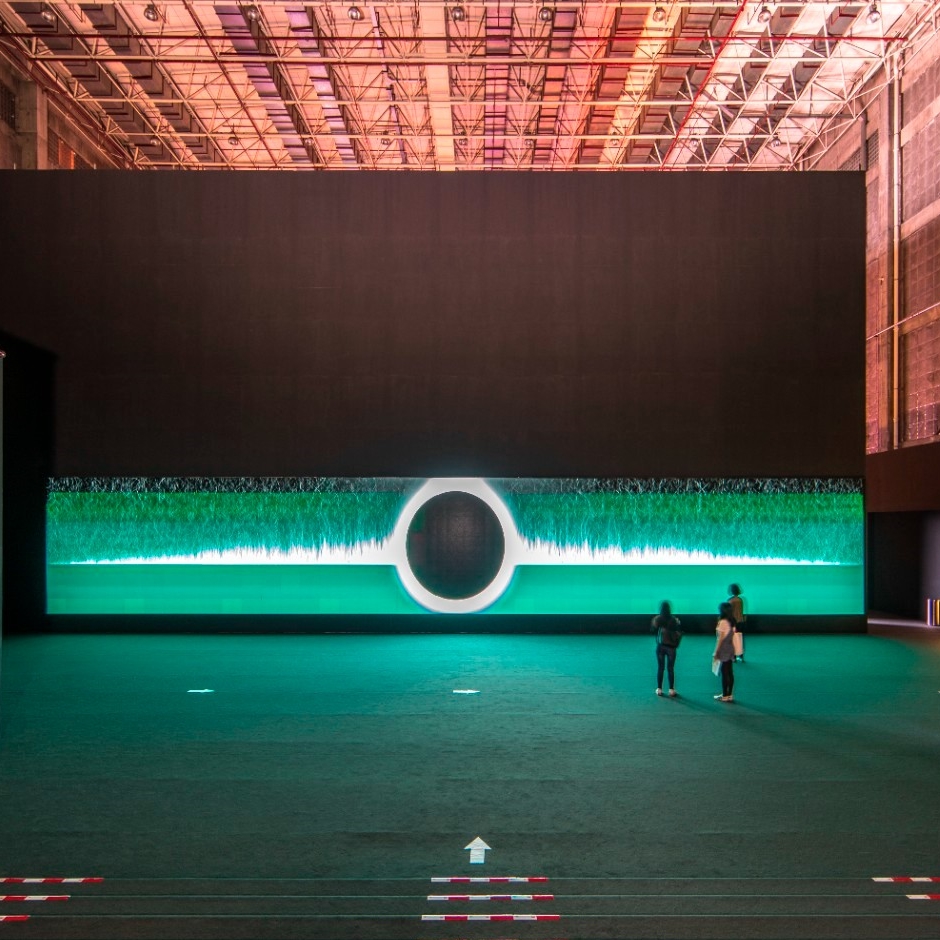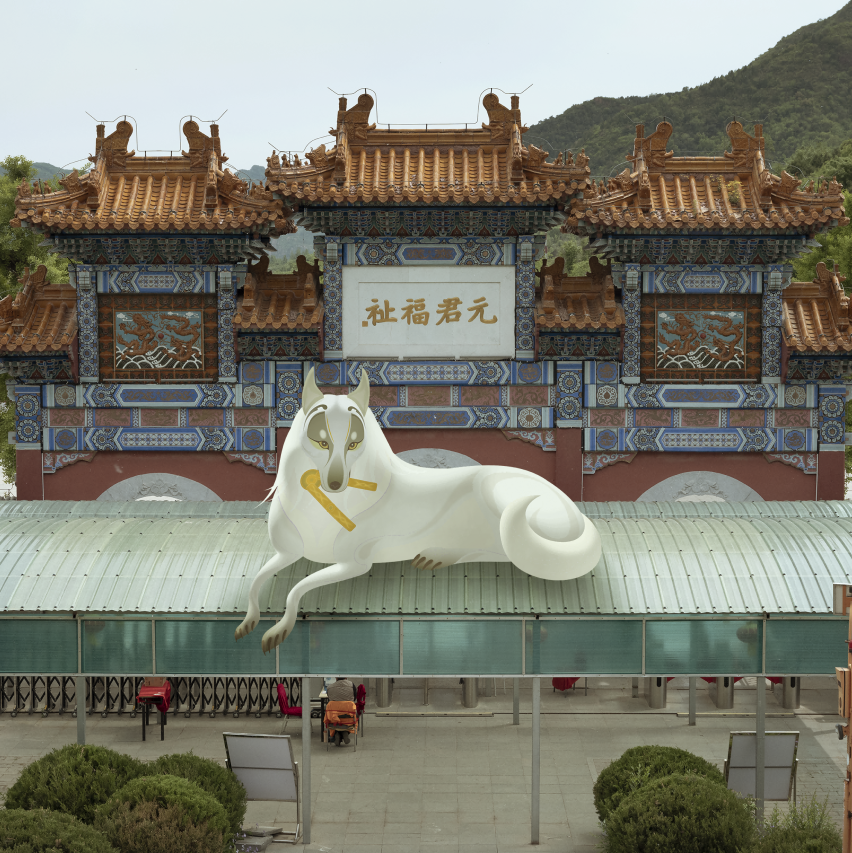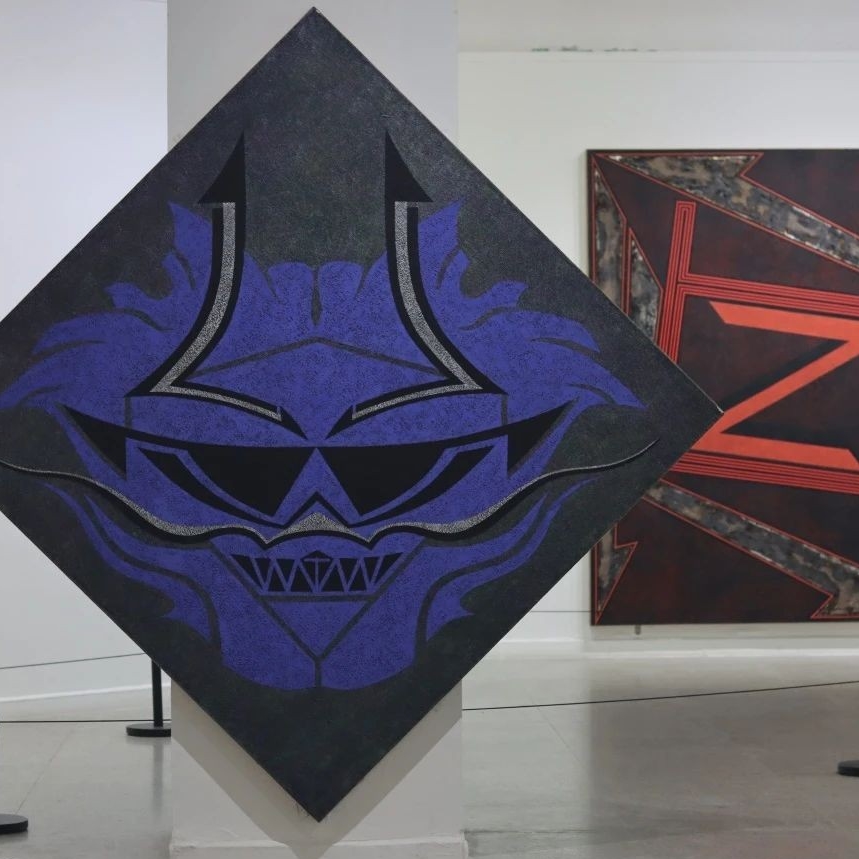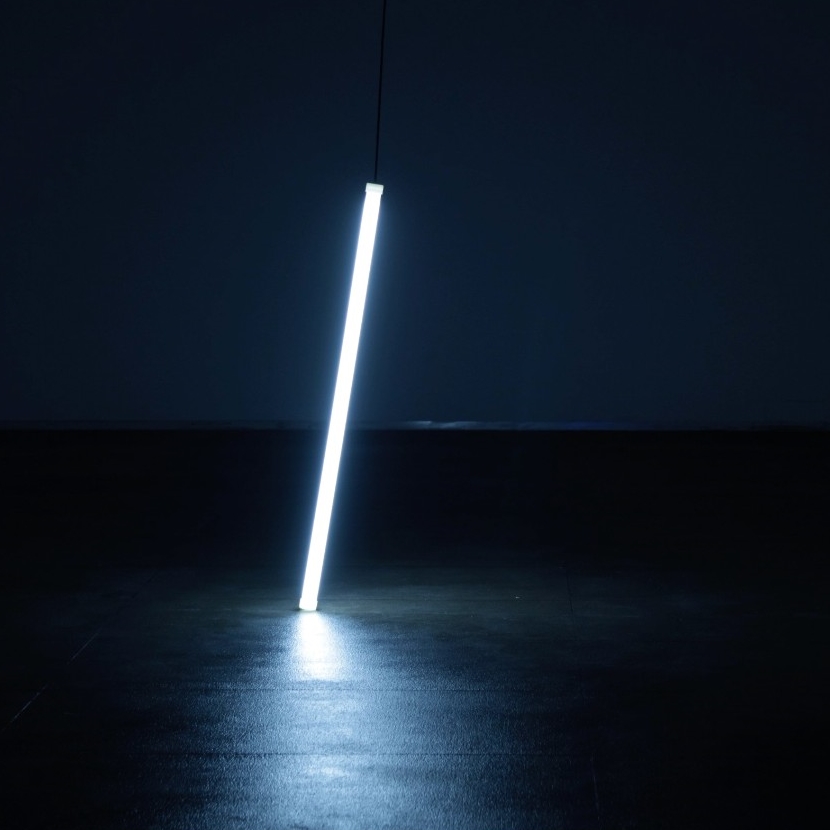Editor's Note: The year 2023 is approaching its end. Thanks to the gradual lifting of the restrictions on offline activities, the long suppressed artistic passion among folk has been suddenly and intensively released this summer. It seems that a certain force has been gathering and surging in the numerous exhibitions held this year; the discussion over the performance art of body, soul, and presence constantly struck our mind in the post-pandemic era. At this moment, we cannot but wonder whether art is seeking a new way out? According to the literature collection of China Body Art: Performance Happening Project Art published in 2015, scholars and critics have been reflecting on the development and problems of Chinese performance art over the past thirty years starting from 1985 and provided many interpretations of "how to define performance art", "the changes of performance art in the Chinese context", "the boundaries of performance art", "flesh, body, and memory", and other questions. However, these issues still await further elaboration and discussion at present.
China Body Art: Performance Happening Project Art, edited by Jia Fangzhou and Zhu Qingsheng, published by Hong Kong Siji Publishing House
The large-scale retrospective exhibition on Yves Klein at Guardian Art Center coincided with the "Crossing: Datong Dazhang Art Exhibition" at Shanxi Contemporary Art Museum in July 2015. This unexpected encounter seemed to imply a dialogue between Chinese and Western performance art. In 1960, Yves Klein leaped out of the window and performed the act of "a painter jumping into the empty air or a ‘nothingness’" by releasing his body into the sky. What exactly is this “nothingness”? Perhaps even Klein himself could not give a clear answer; but it is this metaphysical and dematerialized "nothingness" that has become a unique feature of his art, and also foreshadowed a certain internal correlation between his art and the subsequent Western sporadic art and performance art. When it came back to the study of performance art in China, Datong Dazhang mourned modern art in the form of a live walk around the China Modern Art Exhibition in 1989. His behavior, together with the other six scenes, triggered the performance art that had long been marginalized and even banned as an "illegal" art form, to spontaneously "speak up and take action" on its own behalf.
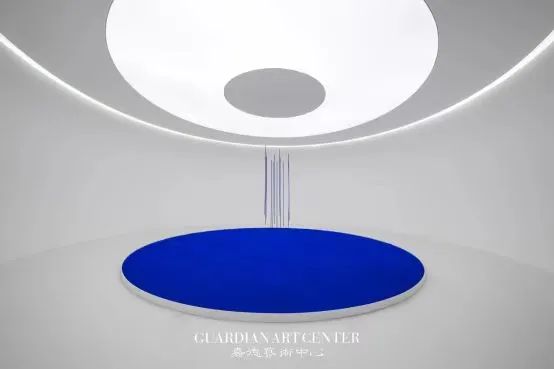
Exhibition View of "Yves Klein - Beyond Time and Space", Image Courtesy Guardian Art Center
 Exhibition View of "Crossing" Datong Dazhang Art Exhibition, Image Courtesy Shanxi Provincial Museum of Contemporary Art
Exhibition View of "Crossing" Datong Dazhang Art Exhibition, Image Courtesy Shanxi Provincial Museum of Contemporary Art
After nearly 40 years, has Chinese performance art still remained in the margins? This year, we have seen that various stakeholders are constantly voicalising for performance art: in April 2023, the "Grain Rain Action" (Xi'an) China Contemporary Performance Art City Joint Exhibition was held; In May, the "Live a Performance Artist’s Life -2023 Performance Art Literature Exhibition" was held at the MadeIn Art Museum in Shanghai; In September, the "Abandoned Ship" Live Art Festival and a series of related workshops were held in Wuhan; In October, UP-ON Upward Performance Art Archive, A4 Art Museum, and Guanghui Art Museum jointly unveiled the 11th UP-ON International Live Art Festival (Chengdu); In December, the 6th (2023) Cement Park Live Art Festival (Shanghai) is about to take place. Perhaps no one can give a definition or prediction on the future development of performance art. But we believe that the process of raising questions, having discussions and constantly presenting diverse perspectives is a more open attitude than force itself.

Professor Zhou Yan is an art historian and critic who works at the Department of Art History at Kenyon College in Ohio, USA. He teaches modern and contemporary Chinese art histories and history of Chinese painting. He has obtained a Bachelor's degree in Philosophy from Sun Yat-sen University, a Master's degree in Art History from the Central Academy of Fine Arts, and a PhD in Art History from the Ohio State University in the United States. In this issue of Performance Art Observation, Professor Zhou Yan was invited to share his view on Performance Art (he prefers to call it “Action Art”) from a perspective of art history with CAFA ART INFO.
Q: The suddenly-appearing "Seven Actions" at the opening ceremony of“China/Avant-Garde”exhibition in 1989 have become an inevitable historical event in the study of Chinese contemporary art history and Action Art . Since you were a member of the preparatory committee for this exhibition and a participant in the history during this period, first of all, I would like to ask you to start from this art exhibition and talk about your observations of the development of Chinese Action Art.
Zhou Yan: Chinese Action Art did not appear out of thin air in the 1980s; its emergence was rather an artistic phenomenon with specific targets. In the 1980s, the avant-garde art movement emerged and initially works were mainly easel paintings, seen in trends of Rationalist Painting and Current of Life. Later, the concept of "Anti-art" came into being and launched a reflection and contemplation on the form of easel painting, because it was widely believed that the power of easel painting was relatively weak and not vigorous enough as an avant-garde art form. As a result, avant-garde arts gradually moved "off the easel painting" and sought expression through ready-made, installations, and conceptual art. Subsequently, Action Art using the body as a medium became vogue. I had a specific discussion regarding the concept of "Action Art" in A History of Contemporary Chinese Art: 1949 to Present. We translated the Western term "performance art" into xingwei yishu and "Happening" into oufa yishu, and these two types have overlapped. However, as translating Chinese back to English, a strange translation, "behavior art," were coined; but the word "behavior" is a psychological term. I adopted the term "Action Art" in my book; "Action" here refers to that artists’ use their own bodies to create art (there are also a few cases where artists use the bodies of others, such as dancers, to perform actions).
Let’s go back to the 1980s. Action Art at that time exhibited two important characteristics: firstly, a sense of rituals. Most Action artists used their own bodies to create art, rather than relied on the bodies of others. They often chose to sit and stand in a silent manner, reminding the audience of with the sense of a religious ritual. Secondly, wrapping the body, most commonly with cloth, or coloring the body after bundling and wrapping it. There are various interpretations of the meaning of "body wrapping", such as expressing repression, meditating in self-isolation, or experiencing a sense of independence.
Song Yongping and Song Yonghong, "Experience on the Site", 1986, Taiyuan, Shanxi (wrapping, the sense of ritual), Image Courtesy of Professor Zhou Yan

Zhang Guoliang, Ding Yi, Qin Yifeng, "Cloth Sculpture on Street", 1986, Wusongkou, Shanghai (wrapping), Image Courtesy of Professor Zhou Yan
As for the exhibition “China/Avant-Garde in 1989” which I participated in the organization, Ministry of Culture, China Artists Association and National Art Museum of China as the official sponsors required that any Action Art should not be carried out on the site and could only be displayed in the form of documentation(such as photos or videos). Otherwise, the exhibition would be canceled. The preparatory committee had no choice but accepted. The well-known "Seven Actions" at the opening ceremony, namely Xiao Lu's "Dialogue" (gun shooting), Wu Shanzhuan's "Big Business" (shrimp selling), Zhang Nian's "Waiting" (egg hatching), Wang Deren's "To Sun-God?" (throwing condoms bound with coins), WR group's "Mourning" (wandering in the exhibition hall wrapped in white cloth), Li Shan's "Goodbye" (foot washing), Wang Lang's "Wandering" (cosplay) were all carried out by artists without informing the preparatory committee in advance. At that time, I was on the second floor, where Zhang Nian was "hatching eggs". I went to communicate with him about the prohibition of actions on the site. However, Wu Shanzhuan's "shrimp selling" and Li Shan's "foot washing" had already ended. There were also the WR group, Wang Deren, and Wang Lang "wandering" in the exhibition halls. Finally, we heard two gunshots downstairs, which led to the closure of the exhibition. This incident became sensational news at the time and attracted a lot of attention from both domestic and international media. Wen Pulin's documentary "Seven Sins" recorded the implementation of these Action Art.

Screenshot of the documentary "Seven Sins", directed by Wen Pulin.
All these actions themselves seemed to denote a certain "foreseeability". For example, the shrimp selling titled "Big Business" foreshadowed the rise of the art market on which art had become a business; "Foot Washing " foresaw that foot-massage service and related entertainments had become an emerging industry; The development of underground or semi-public sex industry seemed to have been foreseen by Wang Deren; "Egg Hatching" disclosed the relationship between artistic creation and art theory, and involved questions such as whether art criticism had a problem of over-interpretation, and the issue of power of discourse, which were issues frequently debated over in the academic community later on; Datong Dazhang and others' mourning for modern art was interpreted as a reflection on Chinese modern art and seemed to send a message that art had been constantly corroded and nearly approached its end; Wang Deren's bundling and scattering of coins and condoms was naturally associated with the "prostitution boom" since the 1990s. The foresight of Xiao Lu's action was even more self-evident. One of the peculiarities of avant-garde artists is their cultural sensitivity in demonstrating certain trends and predictions through art. Therefore, we can say that the significance of Action Art at that time not only lay in the art itself, but also in the foresights it contained and delivered. Action artists had also used their bodies as a medium to advance a reflection on the issues in the globalization and urbanization since the 1990s.

Screenshot of the documentary "Seven Sins", directed by Wen Pulin.
Q: Your English monograph “A History of Contemporary Chinese Art: 1949 to Present” consists of six chapters: Visual Utopia: Art in the Seventeen Years (1949-1966); Anti-Culture: Art of Cultural Revolution (1966-1976); Truth, Virtue, and Beauty: Art in the Post-Cultural Revolution (1977-1984); An Art Hurricane: The Avant-Garde Movement (1985-1989); Art under the Impact of Globalization (1989-1999); Institutionalization and Identity of Contemporary Art (2000- present) has sorted out the history of Chinese contemporary art. Talking about the overall situation of Chinese contemporary art beyond Action Art., W what traits do you think Chinese contemporary art present in terms of its development?
Zhou Yan: Since the post-colonial theory that emerged in the 1980s has been applied to the research on culture and identity with the globalization in the 21st century, the issue of the global vs. the local, and cultural identity have become a new focus in art world. How can art present both global and local themes? This question brings us back to the issue of identity in contemporary art. In the 1990s, Gao Minglu curated an exhibition in the United States entitled Inside Out (titled "Transformation and Breakthrough" in Chinese). The exhibition catalogue recorded a conversation between him and Hou Hanru mentioning the issue of "Chineseness". The proposal of this concept commenced the discussion over the identity and position of Chinese contemporary art in global art. The different national system and cultural background of China have clearly incited more unique topics in addition to the common problems faced by the world.

Zhang Nian: "Waiting" , the Site of the Action Art "Egg Hatching"
I personally pay special attention to the development of ink art. From the 1980s and 1990s on, a group of artists began their endeavor to transform traditional Chinese ink art in a contemporary language, which exhibited a typical consideration of Chinese identity. Under such a transformation, the Eastern aesthetics and philosophy reflected through ink art as an Eastern medium have shown new cultural tendencies. Art critics have used such terms as "new literati painting," "experimental ink painting" and "new ink painting" to describe this new kind of painting. I myself consider conducting a more in-depth study of the relevant parts of Chapter 6, "Institutionalization and Identity of Contemporary Art (2000- present)," in A History of Contemporary Chinese Art: 1949 to Present, sorting out the conceptual meaning, historical development, and complex vicissitudes of literati paintings, extending the discussion to the form, aesthetics, and philosophical connotation of Chinese contemporary ink art, probing into such relationships as time over space, text over image, and heaven vs. earth in a concrete and micro manner and thus making a detailed analysis of the contemporary ink art in conjunction with individual case studies of various artists.

Zhou Yan: A History of Contemporary Chinese Art—1949 to Present
On the other hand, the development of Chinese contemporary art has experienced an obvious "institutionalization", including the entry of Chinese contemporary art into the education system, the national art exhibition system, the CAA mechanism, etc. This progress is similar to the incorporation of modern art and contemporary art into college education in the West. We can imagine that if Chinese contemporary art stayed underground, it could not survive for decades. At the same time, as the art market further develops, contemporary artworks have witnessed a flourishing commercialization and entered the auctions, and more exhibition and collection institutions such as art galleries and museums have been constructed and run. All above shows a tendency of institutionalization of Chinese contemporary art.
Q: You just mentioned the issues of "avant-garde" and "Chinese identity" in Chinese contemporary art. When it comes to Action Art, do you think that Chinese Action Art still has avant-garde characteristics now? And, in what aspects is the "Chineseness" reflected?
Zhou Yan: The avant-garde nature of Chinese Action Art in the 1980s was rather rapidly and forcefully presented in its enlightening and experimenting functions. Because many people at that time had no knowledge of such art form, they felt its great conceptual power. In the 1990s, the quantitatively increasing Action Art gradually departed from "heresy” in eyes of the public and acquired a legitimacy. In addition, both the individual actions of Zhang Huan, Ma Liuming, and others and the collective actions such as "To Add One Meter to an Anonymous Mountain" took place in relatively peripheral and underground sites in the early days. In this century, the continuous appearance of Action Art exhibitions, Action Art festivals, and other activities, proved that their "Chineseness" has been reflected in the process of its institutionalization backed by more capital investment and institutional support, and even its integration into regional cultural activities as an important component. This is obviously different from the original status of Action Art in China. Meanwhile, because Action Art has entered public space seen by more audiences, some aggressive and radical forms of action would be modified or reduced. In addition, compared to its attention to the issue of urbanization in the 1990s, current Action Art is exploring a broader range of issues involving history, culture, economy, aesthetics, philosophy, etc. Few artists used self-torture manner as what many artists did earlier, but resorted to more diverse means. I have been trying to emphasize that, Action Art as an art form should showcase the artists’ wisdom, just like other art forms. This wisdom may contain the classic philosophies of Confucianism, Buddhism, and Daoism and the spiritual crystallization of contemporary thinkers as well.

Report on "China/Avant-Garde” Exhibition, Image Courtesy of Professor Zhou Yan
Q: You once mentioned the concept of "living history" and believed that it was necessary for scholars and critics to participate in the art scene. This presence is also emphasized by Action Art. The live aspect of Action Art provides a more authentic perception of the art scene, but on the other hand, inevitably it would lose a lot of information and power when publicizing it afterwards. What do you think about this phenomenon? Furthermore, should a critic maintain an appropriate distance from the live scene of Action Art so as to make his or her views more objective?
Zhou Yan: First, the phrase "living history" was not created by me; it is the title of Mrs. Hillary Clinton's autobiography. The participatory and interactive nature of art has been a hot topic of discussion in recent years. The participation in art is no longer just a traditional way of seeing paintings. In addition to attending live Action Art on the site, the audience can also take part in through live streaming and online interaction so as to enlarge social participation in Action Art to a certain extent. At the same time, apart from the expansion of public presence, the participatory nature of art is also reflected in its continuous involvement in the culture and life of local communities and remote areas. This is also an issue related to the social function of art. The integration of art with the construction of the local economy, culture, and education is an increasingly popular and influential trend in this century.
The objectivity of the research of critics needs to be judged by standards. An individual critic who has on-site experience can obtain first-hand information while the traditional research of history relies often on second-hand literature/documents. The study of contemporary art emphasizes "presence", which actually offers a new research perspective, brings critics or historians closer to the original art ecology, and achieves an experience in art and life which cannot be approached by any second-hand experience. For example, we can compile “oral history” in our research, which is a very effective way to obtain materials. Through the recollection of the person with the experience of witness, we can initially get closer to the original state of the event, and secondly, record more details and personal feelings on the site. The different perspectives taken by "insiders" and "outsiders", are both worth practicing in research and respecting in value, despite the inaccuracies and non-objectivity in either case to some degree.
Interviewer and Compiler (CN) by Yu Ya, edited (EN) by Sue/CAFA ART INFO


